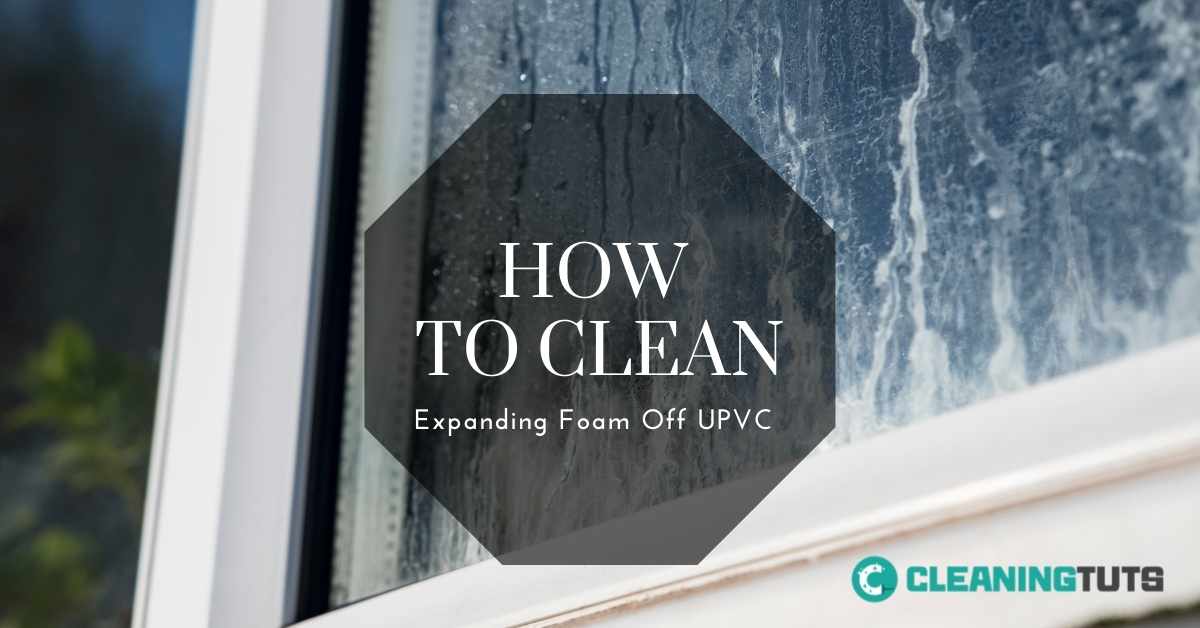How to Clean Expanding Foam Off UPVC
The uPVC or the Unplasticized Polyvinyl Chloride is a cheaper substitute for Woods. These are getting more popular for building up a house exterior. Especially the window paneling and framing structures are made by the uPVC.
Cleaning the expanding foam requires two major steps. It includes pre-cure and post-cure cleaning treatment. Both physical and chemical treatments are required to remove and clean the expanding foams off uPVC.
Removal and Cleaning of the excess expanding foam off the uPVC is mandatory. Otherwise, it may cause potential damage to the uPVC board and the aesthetics as well. Go through this article to the end to understand and implement how to clean expanding foam off uPVC.
How to Clean Expanding Foam Off UPVC
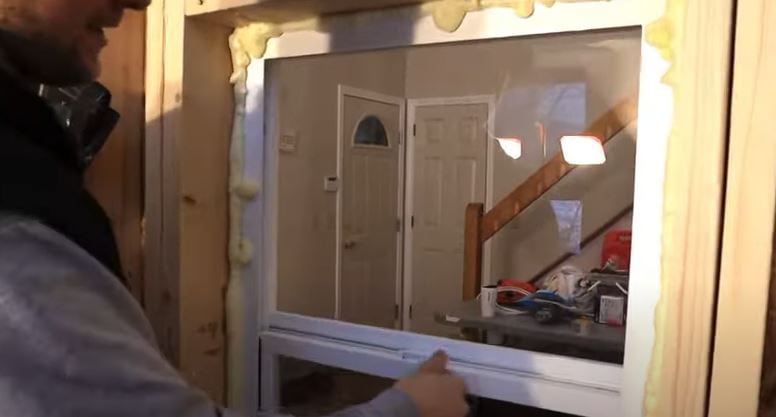
In order to clean the expanding foams, you have to determine the phase of the foam. Generally, two major phases are developed by the expanding foam for UPVC Windows. These are the pre-curing and post-curing phases.
Cleaning Up Pre-Cure Phase
To clean up the pre-cure phase of the expanding foam from the uPVC, you have to use the chemical treatment. The expanding foams consist of dissolved Polyurethane which in the presence of air gets hardened.
Use the Acetone solution to remove the uncured expanding foam off uPVC. It is mandatory to maintain the concentration of the Acetone solution; otherwise, it may damage the Polymer binding of the uPVC.
Dilute the Acetone using distilled water to lower the concentration. Then using a spraying bottle, spray on the target area carefully. The acetone will slowly dissolve the uncured foam.
Make a soapy solution using normal detergent and warm water. Finally, use a microfiber towel to clean up the surface using that soapy solution.
Cleaning Up Post-Cure Phase
If the foam has been hardened, then it has reached the post-cure phase. In these circumstances, scrapping off the extra foam is the initial step.
To do this, you can use a knife, blades, or shaving razor. Gently cut through the foam using the slicing technique. Using the sharp edge and tip of the knife, remove as much foam as possible.
Be careful in this process, as the sharp edges of the blade may cause damage to the uPVC board. For cleaning the stains, you can use Methylated Spirit. It does not damage the surface of the uPVC boards.
Pour a sufficient amount of Methylated Spirit on micro-fiber clothing and rub it against the stains of the board.
How Do You Remove Dried Expanding Foam from Plastic?

The expanding foam gets dried in the presence of air and the surrounding environment. It is the post-cure phase of the expanding foams. This can be harmful to the surface of the plastic materials.
Because of the polymer binding of the Polypropylene, Polystyrene of the plastic gets damaged easily by the chemicals of the expanding foam. Removing the dried Expanding foam from plastic includes two steps.
First Step: Physical Removal of the Foam
Take a sharp-edged knife, blade, or razor to slice through the edge of the foams. Slowly poke and put pressure below the upper surface of the foam.
Gently pull the foams from the plastic surface. Be careful while using the blade, as it may leave permanent scratches and damage on the plastic.
This method will remove the chunk of the dried foam and may leave follow-up stuck foams on the plastic surface.
Scrape the remaining dried foams using a stiff-bristled or power wire brush. Lastly, use a clean sponge and slightly warm water to clean up the residues from the plastic.
Second Step: Removing Dried Stains and Cleaning the plastic
You can use industrial methylated spirit containing 5% of Methyl Alcohol to clean up the foam stains. Take a non-abrasive soft sponge and pour a sufficient amount of methylated spirit on it.
Scrub the affected area gently. Allow the chemical to dissolve and remove the foams. You can also use industrial Ethyl alcohol to get this job done.
Does WD 40 Remove Expanding Foam?
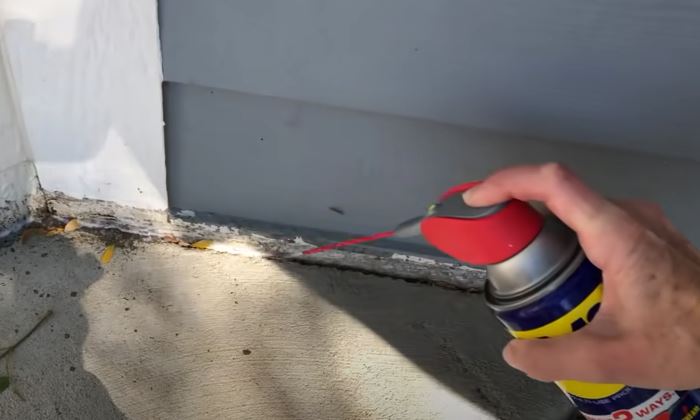
The WD40 is a widely used chemical component for finishing and cleaning different components. It contains higher Hydrocarbon and petroleum base oils which is effective for both cleaning and lubricating procedures. The “WD” in WD40 stands for Water Displacement.
The WD40 is very effective in removing the stains of both open and closed-cell types of expanding foams. It comes in a pressurized aerosol can with a prebuilt spraying nozzle.
Firstly scrape the excess residue of the expanding foam using the utility knife. Then you have to spray the WD40 into the target area, followed by scrubbing using an anti-abrasive sponge or clothing.
There is a mixture of chemical components in WD40 that further lubricates the stained area caused by expanded foam.
It slowly dissolves the cured expanded foam stuck from the surface without damaging the original material. Thus, it is better to use the authorized WD-40 for cleaning up the expanded foam.
How Do You Get Spray Foam Off Window Frames?
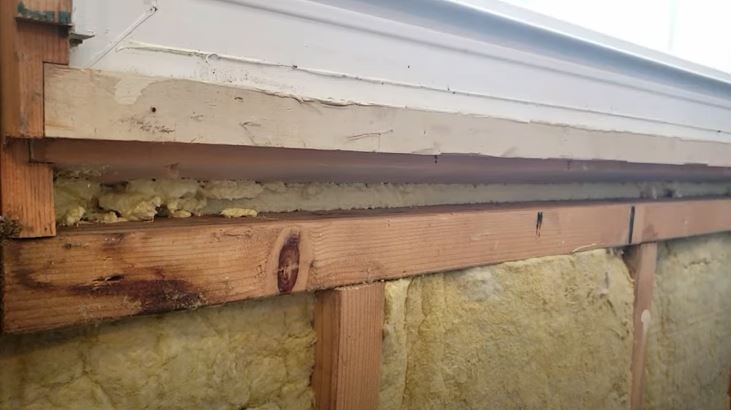
Expanded foams are used while installing the window frames. It acts as a sealant between the studs of the frame or wall and the window frame. Due to overuse and mismanagement, you may let extra expanding foam get settled on the window frame.
This minimizes the enhancement of the outlook of the window frame. Besides, the paint, polish, and natural color of the frame get permanently damaged.
To get rid of the excess expanding foam off the window frame, you have to determine if it is cured or not cured. If the foam is still in the process of hardening, you can use Acetone solution to dissolve the extra foams.
It is better to use a sprayer can for applying the acetone solution. Nail polish remover can also be used as a substitute for the Acetone. But for the cured foam, you have to remove the chunk of the foam first.
To do this, use the sharp edge of some tools such as a blade or kitchen knife. Scrape off the residues followed by a thorough cleaning with warm soapy water. Lastly, use Ethyl alcohol, Methylated spirit, or paint Thinner to get rid of the tough stains of the expanding foam.
How Do You Remove Expanding Foam from A Composite Door?
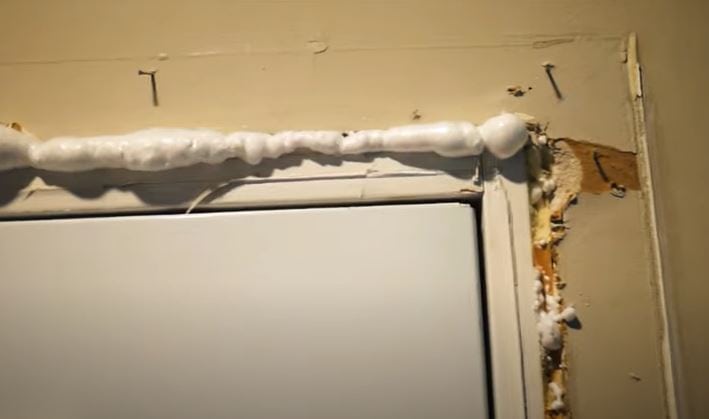
Unlike the common uPVC doors, composite dodgers use a number of materials for their construction. On timber core, different other materials such as PVC and fiberboards are glued together at high pressure. Excess expanding foam can damage the composite doors.
Using the authentic uPVC solvent cleaner, you can remove the expanding foam from the composite door. Spray a sufficient amount of solvent cleaner on the un-cured foam. Besides, you can soak a microfiber cloth in a warm-soapy solution to clean up the foams.
To remove the cured expanded foam, use a utility knife or other sharp objects for scrapping. The remaining residues can be dissolved using Acetone solution or WD40 chemical. Spray the chemicals carefully on the target surface and scrub using a non-abrasive sponge.
How Do You Get Expanded Spray Foam Off Hands and Skin?
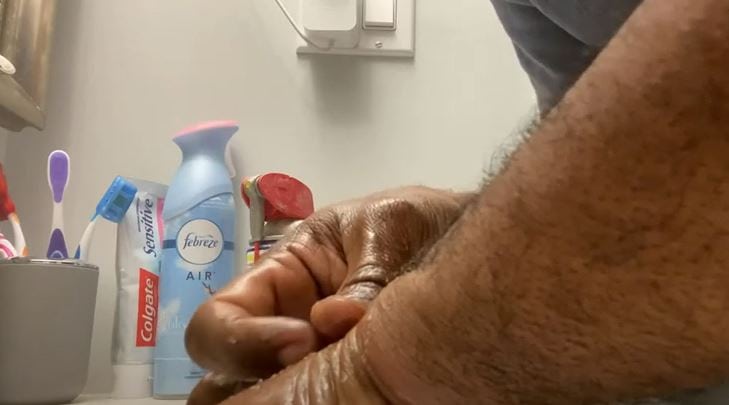
Expanded foams used for sealing or insulation can be exposed to the hands or skin of the body during application. It can cause skin irritation and other skin problems if you are sensitive.
If you are exposed to spray foam from a high-pressure system, then you have to use any sort of degreaser or lubricant. Besides, you can use acetone-based nail polish remover or dilute acetone solution to remove the spray foam from your skin.
Again, if you accidentally overuse the can-type spray foam on your hand, then it is recommended to let it dry off. After getting hardened and drying, you can easily get rid of it by peeling the chunk of the foam. Trying to rub using cloths or a sponge may worsen the situation as the uncured foams are very much sticky.
Can the Same Cleaning Method Be Used for Both Expanding Foam and Cooling Stack?
When it comes to cleaning duramax cooling stack and expanding foam, it’s important to use different methods. While expanding foam requires careful scraping and wiping, a cooling stack can be cleaned with a gentle brush and compressed air. It’s essential to choose the right cleaning method for each specific task.
Conclusion
Expanding spray foams are very popular in house construction as they can be used as both sealant and insulation. Like every other chemical component, it has some disadvantages as well.
Overusing it on uPVC boards, window frames, or composite doors can cause permanent surface damage. It needs to be removed from those to maintain the original aesthetics of the materials.
For this, you should have a clear concept about how to clean expanding foam off uPVC. Using the above-stated techniques and methods, you can save your windows or doors. Moreover, you do not have to spend extra getting expert help or being consulted.

